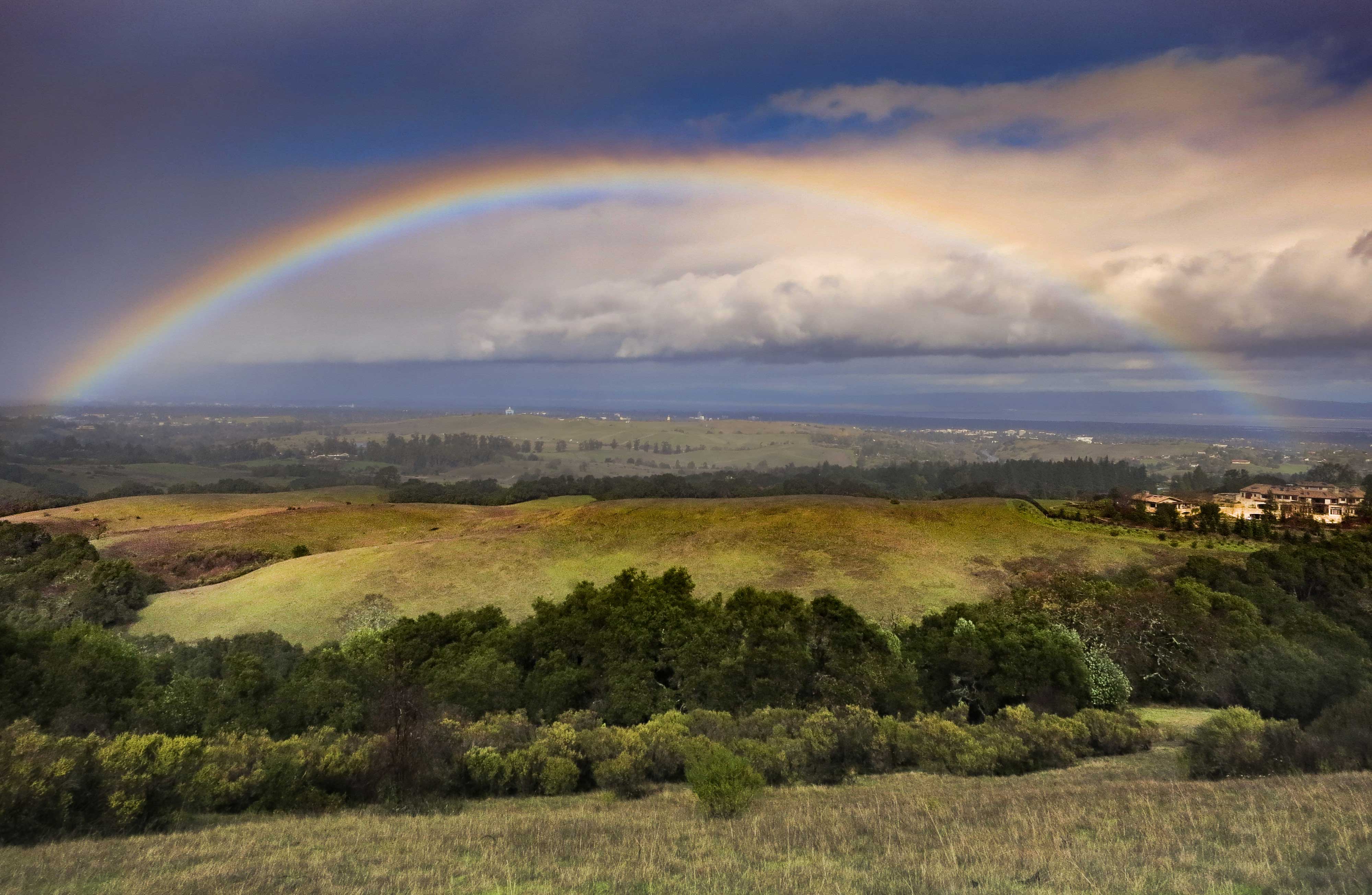
Post rainstorm over California's annual grasslands, Santa Cruz Mountains. Photo by Joan Dudney.
In a recent study of California annual grasslands, a new perspective on an old subject helped CNR researchers enhance their understanding of the effects of rainfall on grassland composition.
Most studies in annual grasslands focus on the effects of precipitation in a given year. The new study, published in the Journal of Ecology September 19, showed that rainfall from the previous year was also a key determinant of composition in annual grasslands. The study found that in fact, the previous-year rainfall—particularly spring rainfall—was a stronger predictor of flowering plant and grass abundances than current-year rainfall.
By adding in previous-year rainfall, says lead author and ESPM graduate student Joan Dudney, researchers can better predict species composition as well as understand the varying impacts of rainfall on grassland communities.
Dudney and co-authors assert that in the face of accelerating environmental change, it is increasingly important to understand and predict how communities will shift across time, particularly for ranchers and conservationists. Their results suggest that annual grassland responses may be more predictable than previously thought when incorporating lagged rainfall and vegetation responses.
- Read more about the study in a blog post by Joan Dudney on the Journal of Ecology blog.
- See the complete study online.
